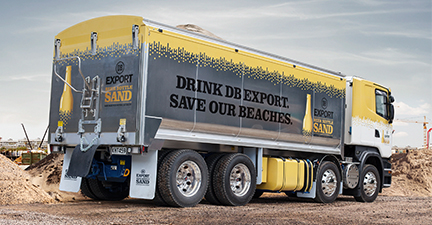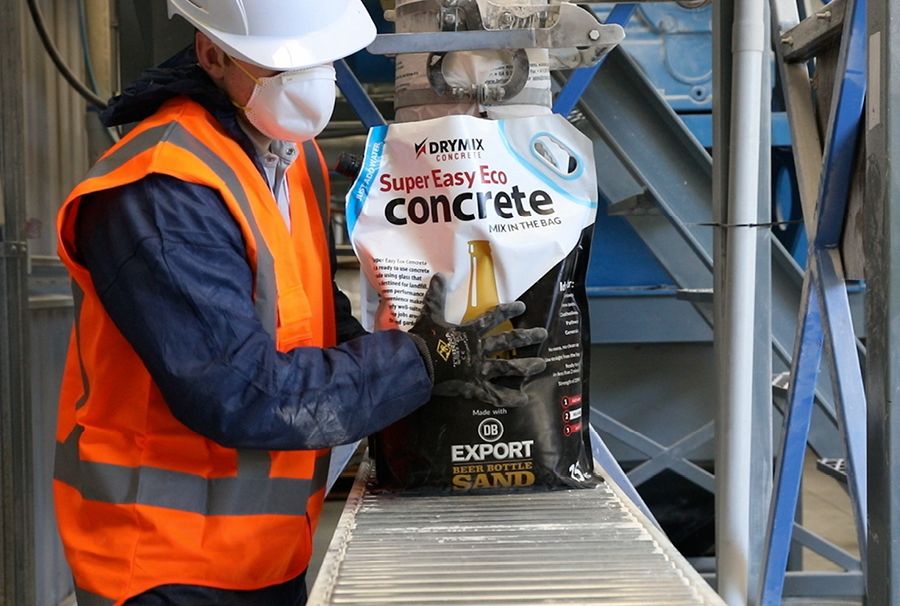Glass leads in recycling push
Glass recycling has been a NZ success story - but consumers could make it even more beneficial.


The controversy about much of our plastic recycling being stockpiled in Malaysia has tended to overshadow a success story in New Zealand – glass, where the industry is hoping to move closer to 84 per cent of glass bottles and jars being recycled in New Zealand by 2024.
But there’s a big obstacle to this goal (moving from the current level of 64 per cent): consumers.
Too many of us are putting the wrong things or the wrong glass in our wheelie bins or kerbside boxes because we don’t fully understand the glass recycling rules.
Glass bottles and jars, yes. Pretty much everything else, no. That includes window glass, broken wine and drinking glasses, pyrex and other ovenware, mirror glass, windscreen glass and most other forms of glass – because they are formed from a different chemical base and can’t be recycled back into bottles and jars.
It can get worse. The recycling industry is full of tales of weird items turning up in recycling bins – like a pig’s head and the woman who “recycled” her old vacuum cleaner. Sex toys, used needles, electric blankets and small engines have all wrongly graced the inside of wheelie bins and kerbside recycling containers.
The problem caused – mainly by the wrong type of glass placed in recycling containers – is one of contamination. If bottles and jars are mixed with contaminated glass, they can’t be easily recycled and one of the great benefits – preventing glass going to landfill – can be thwarted.
It’s a problem DB Breweries has tried to help overcome with the invention of their DB Export Beer Bottle Sand machines. The beer brand recently partnered with a recycling company to help turn waste glass into a useful sand substitute. This contaminated glass, otherwise destined for landfill, then becomes a product which (among other uses) goes into a ready-made concrete (Drymix Super Easy Eco-Concrete) available at DIY retailers.
So far, they have crushed over 300 tonnes of glass into a sand substitute – also used in roading, construction (as at Queenstown airport) and golf courses – where it takes the place of bunker sand which would otherwise be sourced from beaches.
DB Export is also running, this summer, a competition encouraging Kiwis to submit “world-saving ideas” for a prize of up to $50,000.*
Glass recycling, however, is already a world-saving idea and Dominic Salmon, scheme manager for the Glass Packaging Forum, says more can be done.
The forum connects businesses that sell glass-packaged consumer goods with those that collect and recycle glass – enabling glass to be returned to the furnace or made into alternative products, with the aim of zero container glass being taken to landfill. It is funded by levying members according to the amount of glass put into the marketplace.
The overall picture is complicated by the fact there are 66 councils in New Zealand responsible for recycling and many use different schemes. Some, like Auckland, use co-mingling (where glass, plastic, paper and cardboard) are all placed in the same wheelie bin and are sorted later – often by machine.
Others, like Tauranga, use recycling contractors who sort the glass – green, brown and clear – into their different colours ready for recycling at the kerbside.
“New Zealand is now about 64 per cent effective in recovered glass materials,” he says. “That means that virgin material used to make glass (sand, soda ash among others) is needed only for that other 36 per cent.
“That’s the beauty of glass – it is infinitely recyclable and what a lot of people do not realise is that we can do it all here in New Zealand.”
Consumers, he says, can help greatly by better understanding how their local council operates their recycling scheme: “Have a look at your council’s website and read the instructions. Councils have got a really good handle on recycling these days and there is usually really good information available.”
The most common mistake is believing other forms of glass can be recycled alongside the beer, wine and other bottles and jars which are the mainstay of recycling: “You get people putting watch straps in the recycling,” says Salmon, “ and microwave glass, window glass and even things like medical glass.
“Some of those items are made from specially toughened glass [so can’t be recycled with the bottles and jars] and you wouldn’t want some of the others, like medical glass, going into anything to do with food and beverages.”
There are some general observances consumers can make to help move the glass recycling needle closer to 84 per cent by 2024 and, eventually, towards 100 per cent:
• Take the caps off wine bottles
• Recycle only bottles and jars
• No ceramics
• No light bulbs
• No window glass
• No pyrex or ovenware
• No microwave glass
• No mirror glass
• No drinking glasses, including wine glasses
*For more information on the Save The Entire World competition here
As one of New Zealand’s largest beer producers, we know we need to operate sustainably – not just for our sake, but also for the good of our local communities. That’s why sustainability is a key part of the way we do business at DB Export. Over the last three years DB Export has created two incredible, ‘world-saving’ ideas – Brewtroleum and Beer Bottle Sand. Now we’re looking for the next idea that might help ‘save the entire world’.



